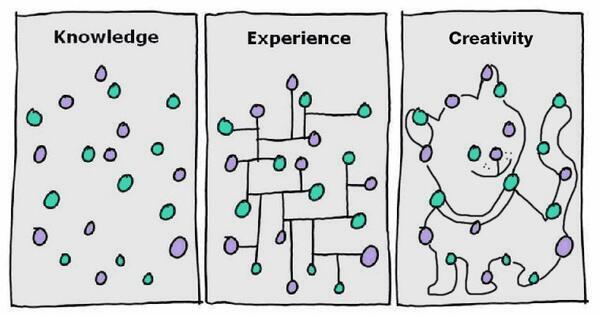Innollects
Innovation and Design Thinking Workshop


Reclaim Your Creative Confidence
Most people are born creative. As children, we revel in imaginary play, ask outlandish questions, draw blobs and call them dinosaurs. But over time, because of socialization and formal education, a lot of us start to stifle those impulses. We learn to be warier of judgment, more cautious, more analytical. The world seems to divide into “creatives” and “noncreatives,” and too many people consciously or unconsciously resign themselves to the latter category.
And yet we know that creativity is essential to success in any discipline or industry. According to a recent IBM survey of chief executives around the world, it’s the most sought-after trait in leaders today. No one can deny that creative thinking has enabled the rise and continued success of countless companies, from start-ups like Facebook and Google to stalwarts like Procter & Gamble and General Electric.
Students often come to Stanford University’s “d.school” (which was founded by one of us—David Kelley—and is formally known as the Hasso Plattner Institute of Design) to develop their creativity. Clients work with IDEO, our design and innovation consultancy, for the same reason. But along the way, we’ve learned that our job isn’t to teach them creativity. It’s to help them rediscover their creative confidence—the natural ability to come up with new ideas and the courage to try them out. We do this by giving them strategies to get past four fears that hold most of us back: fear of the messy unknown, fear of being judged, fear of the first step, and fear of losing control.
Easier said than done, you might argue. But we know it’s possible for people to overcome even their most deep-seated fears. Consider the work of Albert Bandura, a world-renowned psychologist, and Stanford professor. In one series of early experiments, he helped people
conquer lifelong snake phobias by guiding them through a series of increasingly demanding interactions. They would start by watching a snake through a two-way mirror. Once comfortable with that, they’d progress to observing it through an open door, then to watching
someone else touch the snake, then to touching it themselves through a heavy leather glove, and, finally, in a few hours, to touching it with their own bare hands. Bandura calls this process of experiencing one small success after another “guided mastery.” The people who went through it weren’t just cured of a crippling fear they had assumed was untreatable. They also had less anxiety and more success in other parts of their lives, taking up new and potentially frightening activities like horseback riding and public speaking. They tried harder, persevered longer, and had more resilience in the face of failure. They had gained a new confidence in their ability to attain what they set out to do.
We’ve used much the same approach over the past 30 years to help people transcend the fears that block their creativity. You break challenges down into small steps and then build confidence by succeeding on one after another. Creativity is something you practice, not just a talent you’re born with. The process may feel a little uncomfortable at first, but—as the snake phobics learned—the discomfort quickly fades away and is replaced with new confidence and capabilities.
Program Overview
- In a rapidly changing business environment, Innovation and the ability to creatively adapt to changes become key to organizational success
- Employee creativity makes a valuable contribution to the overall organizational performance, effectiveness and continued existence
- In this workshop, participants will focus on innovative processes and outcomes so that they can positively contribute to the results of their organization
- Participants will be exposed to the tools and frameworks to enhance creative problem solving model – Design thinking
- A core assumption is that everyone is creative and by focusing on a creative approach to work each person can improve their success
Program Objectives
- Provide tools to generate, manage and apply creative and innovative ideas
- Understand and learn to apply Design Thinking approach to solving problems and improve customer centricity
- Explore the factors which support and/or inhibit creative performance in the workplace
- Provide the means to examine, question, assimilate and connect participant knowledge and experiences